© 2017, Kyle T. Cobb, Jr. All Rights Reserved. Links | Terms and Conditions



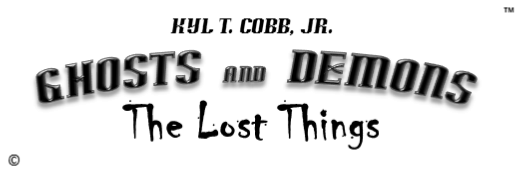



EXPLORE THE DIFFERENT CONCEPTS OF DEMONS
GHOSTS AND DEMONS: THE LOST THINGS TAKES A LOOK AT THE HISTORICAL EVOLUTION OF THE CONCEPTS OF DEMONS. FROM BABYLON AS THE SOURCE, DEMONS ARE TRACED AS THEY EVOLVE UNDER THE INFLUENCE OF CHRISTIANITY IN THE WEST AND BUDDHISM IN EAST.


A LOOK INSIDE
GHOSTS AND DEMONS: THE LOST THINGS traces the nature of demonic entities through primary sources texts from across the world and throughout the ages. From the original texts discussing demons in the epic of Gilgamesh to modern concepts, the behavior and methods used to fight demons have evolved based on the emergence of over-
AN EXCERPT FROM THE SECTION ON DEMONS AND GILGAMESH
Let us start our worldwide journey with the beginning of recorded history and one of the most complete of the early stories, the epic of Gilgamesh.
According to various fragments of the story, Gilgamesh is considered by the gods to be too proud and arrogant for a king. As a result, a wild man/ monster named Eabani (Enkidu) is sent to defeat and humble the king. After a long battle, neither Gilgamesh nor Enkidu can defeat one another and they become friends.
While adventuring together, Eabani dies. As a result of the death, Gilgamesh sets out on a quest to find the true meaning of life.
Figure 71 A carving of Gilgamesh
Luckily for us, not only has this story been preserved but it also contains some of the earliest known concrete references to demons.
In the ancient Sumerian texts, there are three basic classes of supernatural: Disembodied human spirits, the Half-
Utukku
The most prevalent demon in the Gilgamesh saga is the Utukku which is initially the spirit ghost of Gilgamesh's companion Eabani. While Gilgamesh and Eabani adventured together, they confronted a creature named Khumbaba (Humbaba) that guarded a cedar forest. While fighting Khumbaba, Gilgamesh prayed for help and the Sun God Shamah bound Khumbaba with 8 (or 13) winds. Even though Khumbaba begged for his life, Eabani convinced Gilgamesh to kill the creature.
As punishment for killing Khumbaba, Eabani is sentenced by the gods to death. Missing his departed friend, Gilgamesh asked the god Nergal to return Eabani to him and the god complied.
Beyond the appearance in Gilgamesh, the Utukku play a major role as demonic entities in a number of cultures. Over time, the term Utukku evolves in Sumerian and Babylonian text to be a kind of generic demon that haunts barren places and harms man.
One reference in a spell describes the creatures:
"A door cannot exclude them, A bolt cannot turn them back; They slither through the door like a snake, They blow in by the hinge like the wind, They bear off the wife from a man's embrace; They snatch the son from a man's knee."
-
Often associated with the breaking of a taboo, the Utukku is described as prowling like a dog and faster than a falling star. The female, called a Lamashtu, has a hairy body, a lion's head, donkey teeth and donkey ears. She also has long fingernails and the feet of a bird.
–––––––––––
AN EXCERPT FROM THE SECTION ON WESTERN CONCEPTS
The mention of the Shedim in both Babylonian and Hebrew brings reason for another digression. It is important that concept of transfer of religions be discussed.
There are 3 primary methods of Transfer: neighbor to neighbor, trade, and conquest.
In following the story of demons as they move east from Babylon to across the world, ideas, concepts and names become blended. For a religion to survive in its purist form there is an inevitable conflict between change and preservation. For a culture bombarded by divergent religions to survive, they must try to preserve their cultural identity by the enforcement of cultural traditions to isolate themselves from their neighbors. This is accomplished in several ways:
Conversion of completing religions gods to lesser gods/demons.
Branding any completing religions gods as Evil.
Prohibiting breeding outside the tribe as well as self-
Unique diets.
Maintaining tribal languages.
Maintaining secret rites for the initiated.
So having made a minor digression, we return to mentioning that the Babylonian demon Shedim would find its way into both Jewish text and Jewish culture.
Jewish Writings
If we put the Jewish culture into 2000 B.C. context they are small tribe that recently adopted monotheism. Prior to the ascendance of the cult of Yahweh to the dominant religion in the Jewish culture, a great deal of evidence suggests that they are polytheistic. For example, the use of the “–EL” ending is Jewish names is one of the key pieces of evidence in the polytheistic assertion. To illustrate this point, the name Raphael on the one hand can be translated as “healing of god” but it also is equally grammatically correct in ancient Hebrew to translate the name as “God of Healing.”
Other than Akhenaten’s brief forced worship of Atun in Egypt from 1353 to 1336 B.C., generally speaking the dominance of the Yahweh cult made the Jewish people one of the few monotheistic cultures of their time.
Asserting that all things come from god, many Hebrew texts including elements in the Old Testament have Spirits acting as Yahweh’s or Elohim’s servants to issue punishments. It is important to make note of the contrast here. In this case there is a distinction between a spirit as an agent of God and the term demon as a harmful force.
–––––––––––
AN EXCERPT FROM THE SECTION ON EASTERN CONCEPTS
One of the many Tibetan exorcism rituals begins:
"Long lips reaching out from where one hundred males gather send envious talk (mi-
It expresses the belief that the world is moving from an age of prosperity (bskal-
For someone raised in the Western Judeo-
In discussing Western demons, it was necessary to define the demons based on impact on their victims. As discussed earlier, the four defining properties of demonic possession are:
• A demon has not previously been a human.
• A subject under demonic influence is not exhibiting normal symptoms of a scientifically definable physical or mental disease.
• Demonic influence must have outward manifestations beyond the explainable abilities of an associated host.
• A demon is assumed to be of limited power and, therefore, at a lower level than a primary deity.
Almost without exceptions, Western demons are treated as non-
In studying Eastern demons, possession is only one possibility.
Unlike the more intangible demons of the Christianized West, Eastern demons can have physical bodies just like people. It has been suggested by some historians, that the origin of some of the demon stories may actually be residual stories from encounters with tribes of feral humans in antiquity. Eastern demons are described as:
• Most non-
• Tibetan demons are mostly invisible, extra-
• Hindu demons are often described as physical monsters, illnesses or possessing spirits.
• Japanese demons are traditionally fearsome Ogres but can also take the form of embodied illness or nature spirits.
• Mesoamerican demons are the forces of nature given physical form
–––––––––––
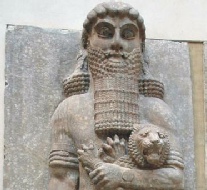
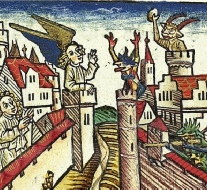
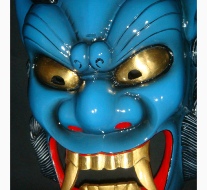
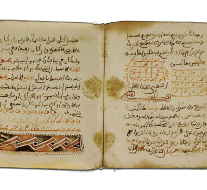
GILGAMESH
WESTERN DEMONS
EASTERN DEMONS
PROPERTIES OF DEMONS